Peruvian Apple Cactus (Cereus peruvianus) Care + Growing Tips
The Peruvian apple cactus is a beautiful flowering plant that grows naturally in the dry regions of South America. The succulent, which is native to Brazil, Paraguay, Argentina, and Uruguay, can reach incredible heights of up to 20ft when grown under optimal conditions. It also produces edible fruits at specific times of the year and remains ideal for decorating indoor and outdoor spaces.
The Apple Cactus is a hardy plant that can withstand extreme conditions for extended periods. A variety of issues need to be taken care of when growing an apple cactus plant. As you watch for these issues, you will be able to enhance the plant’s exquisite features.
Common names

The scientific name of the Peruvian apple cactus is Cereus repandus. However, you are more likely to hear its more common names, including the apple cactus, queen of the night, giant club cactus, hedge cactus, and column cactus. (A few indigenous tribes also refer to this succulent as Cadush or Kayush).
Apple Cactus Growing Requirements
A Peruvian apple cactus is relatively easy to grow and maintain. It rarely needs watering and prefers dry sandy soils with adequate drainage. Several considerations when growing the plant include water requirements, soil, PH, light, etc.
The apple cactus plant also requires constant pruning, primarily when grown within a confined space. It’s always advisable to have additional space when growing it indoors since it grows pretty fast.
Here are the plant’s major growing requirements:
Water requirements
The apple cactus plant rarely needs much watering because it is succulent. It has several adaptations that promote its growth in areas with minimal rainfall, including succulent leaves that store water for extended periods.
Constantly water your plant thoroughly during its active growing phase (which happens during spring and summer months). Allow the soil to dry out before each watering to prevent overwatering your cactus.
The plant requires minimal watering during the winter months. Too much water can negatively affect the plant’s health and cause complications in the future. Experts suggest that adhering to a strict watering schedule (about once a week or more) can help to preserve the plant during its dormant phase.
How to properly water your apple cactus plant
- Check the soil – Always check the soil before watering your plant. Dip your finger to about two to three inches under the potting medium to check for any moisture before adding more water. Moist soil indicates that the plant might have enough water already (and does not require additional water).
- Add adequate amounts of water – The Peruvian apple cactus plant requires minimal water per session, although the watering frequency depends on the season. Sprinkle water sparingly on the surface until the top layer becomes moist. The amount of water also depends on the size of the plant and the pot. Larger pots are more likely to hold excess water (especially if the plant has a smaller size).
- Leave undisturbed for some time – After water, it’s advisable to allow the water to drain without disturbing the plant. A regular once-a-week schedule is ideal when watering an apple cactus.
Soil and pH
The apple cactus plant grows best in, well-draining sandy soils. The species prefers slightly acidic soils with a pH ranging from 5-7 on the scale. You can check the acidity of the soil by testing it yourself using a good soil pH kit or by collecting a sample of the medium and taking it to the lab for analysis.
You can also check on the potting medium before deciding to grow the plant indoors. Some potting mediums might require you to add sand to increase the drainage capability of the soil. An ideal soil mixture should resemble the desert soils on which the plant naturally grows.
Light requirements
The apple cactus plant requires a lot of light to grow (about 50w per square foot of space). It’s advisable to place the plant close to a well-lit window if you are looking to grow it within an indoor space.
Consider placing the plant in an open space where it can access direct sunlight without obstructions when you choose to grow an apple cactus outside. The plant proliferates and flowers during the spring and summer months and enters the dormant phase on the onset of winter.
Some cooler regions might require adopting artificial light to provide for the plant’s needs. An artificial light fixture might require some additional cash, but it might reduce variations in light intensity as seasons change.
You can always consult an expert if you’re still unsure of the ideal lighting demands of your plant.
Fertilizer
Cactus plants are accustomed to growing in soils with limited nutrient values. Most plants can survive without the frequent need to add fertilizer to the soil, but it’s always recommended to add some fertilizer to boost your plant’s health.
Identifying the type of nutrients missing in the soil is a crucial step to consider before adding extra fertilizer. Collect a soil sample and take it to the lab for analysis to gain a better understanding of the soil’s nutrient quality.
The main elements of cactus fertilizers include:
- Nitrogen – Nitrogen encourages the growth of the leaves, stem, and other upper layers of the plant.
- Potassium – Potassium is essential during the flowering and fruit development stage. Apply the fertilizer during the summer and spring months to encourage blooming and flowering.
- Phosphorous – Phosphorous encourages root growth and seed germination.
You can opt to apply fertilizer by mixing the product with the soil during transplanting or adding small pellets on the surface that continuously dissolve after watering. The best alternative involves mixing the fertilizer with water and gently “watering” the plant using the concoction.
Temperature
Apple Cactus plants grow best under hot and dry conditions. The ideal temperature ranges from 50-70 °F. The species is rarely affected by salt and can also do well in a coastal climate.
It’s advisable to maintain a constant temperature range of 50-55℉ when growing the plant under winter conditions.
How to Propagate Peruvian Apple Cactus
Cactus plants of the Peruvian apple variety require trimming and propagation at various points throughout their growth cycle. The species adapt well to growing in adequately sized pots for considerable periods. However, you might have to occasionally transplant the plant during its younger years, as the plant can quickly outgrow its potting surface.
Large apple cactus plants might also require occasional pruning to limit the plant’s height and promote new offshoots. It’s essential to prune only when necessary and to take care when doing so. Improper pruning techniques might be more detrimental in the long term and harm the plant by causing injuries.
Germinating an apple cactus seed and rearing the plant from infancy can prove to be challenging and time-consuming. You can propagate your apple cactus by looking for and transplanting small offshoots that grow from the plant’s base. The offshoots adapt quickly and are more likely to be successful compared to growing using seeds.
Another propagation method involves making small cuttings on the plant’s stem. The process requires good knowledge of the plant and an additional skill of making smooth cuts.
Here is an insight on how to go about the procedure:
- Identify a mature apple cactus plant – A mature plant has several stem extensions from the main stem.
- Make a cutting on the stem top part of the plant – Carefully make a smooth cutting on the top side of the stem you intend to propagate.
- Allow the cutting to dry for about a week or two – Allow the cutting to dry out undisturbed for about one week before planting the dried cutting in an ideal potting medium.
- Observe the cutting and analyze its growth pattern – Ensure you don’t overwater the plant during this stage, as it can affect the plant’s future health and cause unwanted cases of root rot.
Types (Varieties) of Cereus peruvianus
The apple cactus plant species has about 33 different varieties, each with unique features. The most common is the Peruvian apple cactus, which is identifiable by its height and pale green leaves.
Examples of less common varieties of the species include:
| Plant Species | Identifying characteristics | General Care tips |
| Cereus Jamacaru | Thornless stemsTall plant growing to over 20ft. Flowering plant and produces edible fruit | Avoid giving the plant too much water. Propagate only when necessary |
| Cereus hildmannianus | A flowering plant that produces white flowers on occasional bloom. Produces edible fruit. Features cylindrical segmented stems. | Maintain intensive lighting during blooming. Susceptible to root rot when grown in damp, wet soils. |
| Cereus tetragonus | Native to North America Reach considerable heights and are often mistaken for fairy tale castles, common and dwarf succulents | Minimal watering. Require constant monitoring during the early stages of growth. |
Flowering
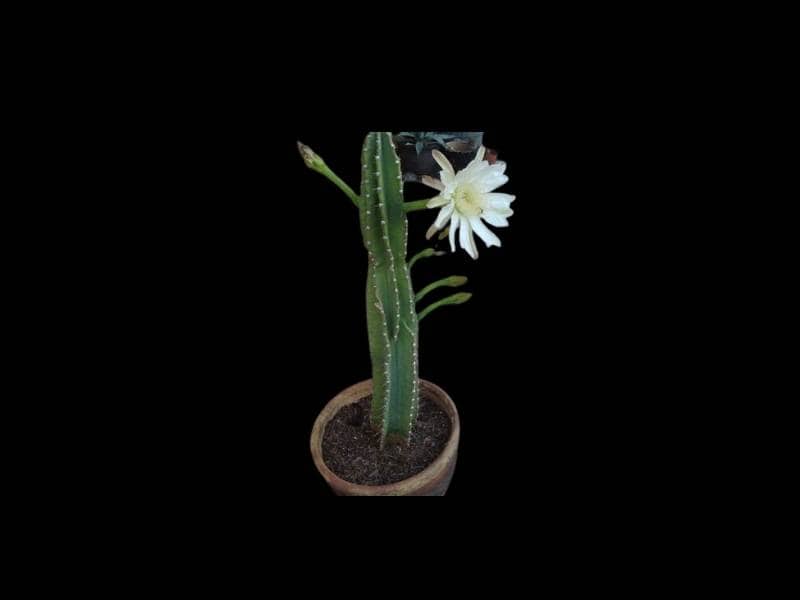
Apple Cactus plants bloom in late spring and summer. The plant produces red, cream, and white flowers that only appear after dark. The plant’s flowers have a sweet fragrance that attracts moths, bats, and other night creatures to help pollinate the plant.
The flowers also have a reduced lifespan. They only appear once before they close again in the morning. People growing their apple cacti should consider using small tools, including soft brushes, to pollinate their flowers when a bloom occurs purposefully.
Apple Cactus Fruit
Apple Cactus plants produce edible fruit during the winter months. The fruits are large and feature a red exterior when ripe. The inside of the fruit is white and has tiny black crunchy seeds that are also edible.
Apple cactus fruits have a mild sweetness and have many health benefits. The fruits are a rich source of natural sugars, vitamins, and essential minerals. Besides, you can eat the cactus raw (after it has ripened), but make sure you wash it first.
Take note that some animals eat cactus as well, so if you’re growing it as an outdoor plant, you migh find it eaten before you get to it.
How fast does a Peruvian apple cactus grow?
Apple cactus fruits grow to enormous sizes over time and can reach heights of up to 33ft and a diameter of about 20 cm. The plants can multiply under ideal conditions and at certain times of the year.
Peruvian apple plants can propagate by small offshoots from the main stem (usually close to the roots). If you let the plant grow uninterrupted, it can also reach a width average of 1 m.
Common Pests
The Peruvian apple cactus is a hardy plant. However, underlying conditions may cause pest and disease attacks on sensitive regions of the plant.
Common pests that affect the plant include:
| Pest name | Pest Identification | General treatments |
| Cactus cyst nematode | Damage to the plant’s roots | Planting only healthy plants Disinfecting the potting medium |
| Twospotted spider mite | Plants with web-like brown strings on their stems | Chemical treatments, including Nissorum 10 WP |
| Greenhouse firefly | A waxy, dusty white substance covers adult plants | Chemical treatments, including Decis Mega |
| Aphids | Small brown spots on a plants stem | Chemical treatments including applying Mospilan 20 SG |
Common Diseases
The apple cactus plant is susceptible to rot mainly because of overwatering. A diseased plant looks weak, saggy and might produce a foul smell on the affected surface. You can deal with most diseases by avoiding wet and soggy potting medium, disinfecting affected soils, or chemical treatments for affected areas.
Some of the common diseases affecting Peruvian apple cactus plants include:
| Disease name | Identification features | Prevention and general treatments |
| Bacterial soft rot | Brown spots on the stem that grow darker and larger over time. A foul smell if the plant is left unattended | Chemical treatment with champ, captan, etc. Cutting off infected parts of the plant Burning infected plants (for severe cases). |
| Foot rot | Brown wet spots on the plant’s stem Rotting of the plant’s base A white fluff covers the plant. | Avoid overwatering Providing good aeration Exposure to sunlight Applying fungicides on infected parts |
| Phyllocystica pad spot | Conspicuous grey-black spots growing on the stem Circular dots might also appear over time. | Providing proper aeration Chemical treatment Disposing of infected plants Maintain a constant temperature |
| Cactus stem spot | Prominent brown spots on a plant Black spots might develop on the affected parts. | Recommended fungicide treatment Burning of severely affected plants |
| Anthracnose | Black irregular spots on the stem surface Wilting of affected stems | Avoid overwatering Careful monitoring of the plants Use of chemicals including Topsin, Score, Bravo, etc. |


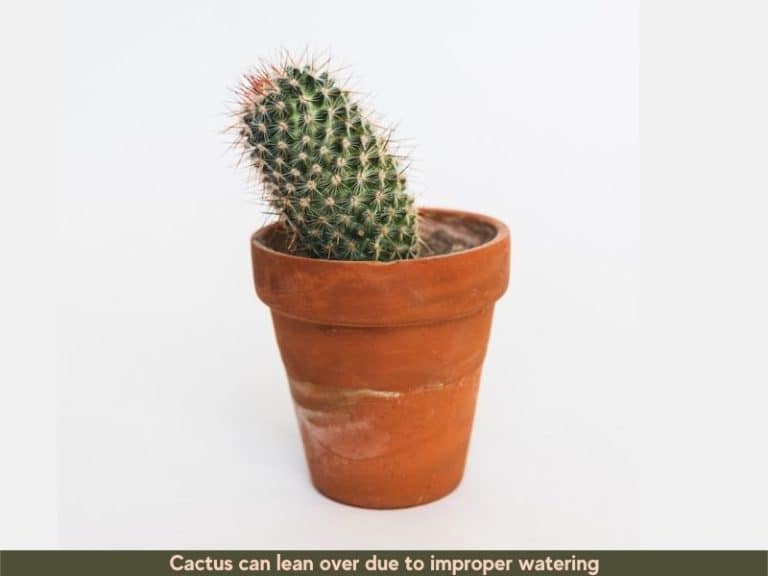

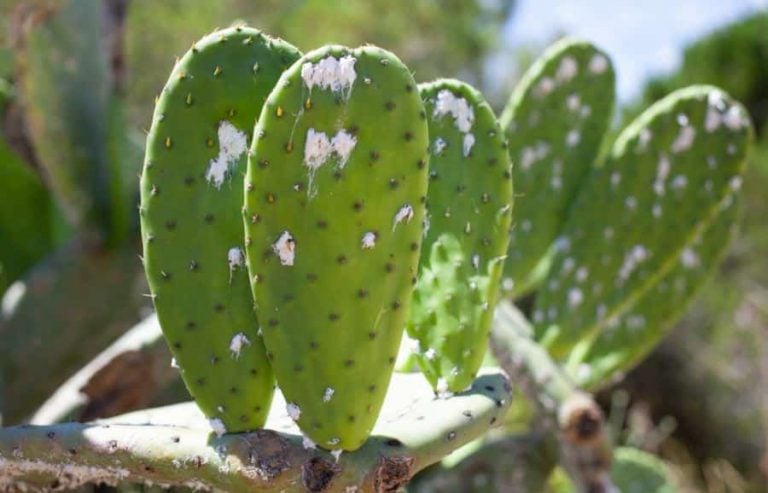
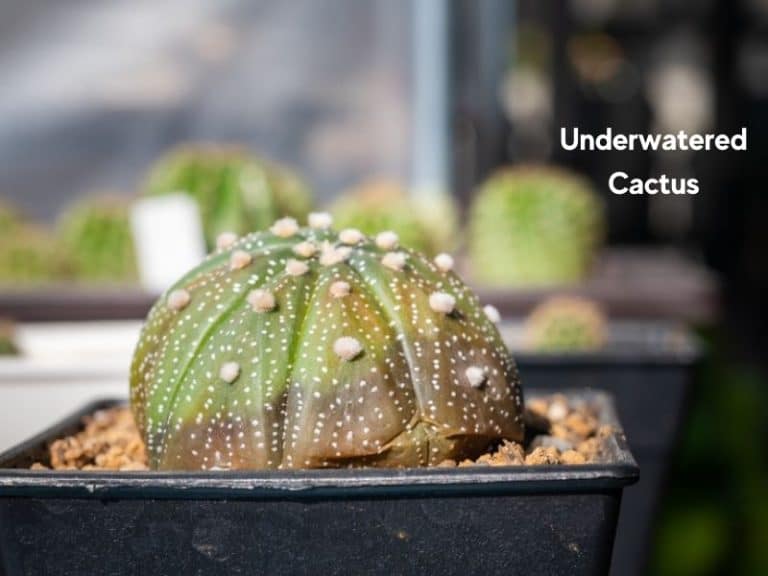
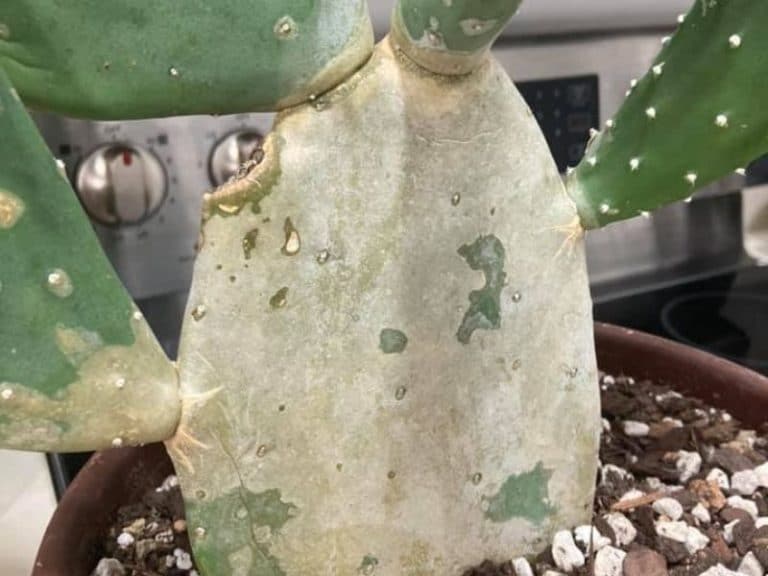
I ate Peruvian Apple cactus today and it’s always amazing to the taste buds